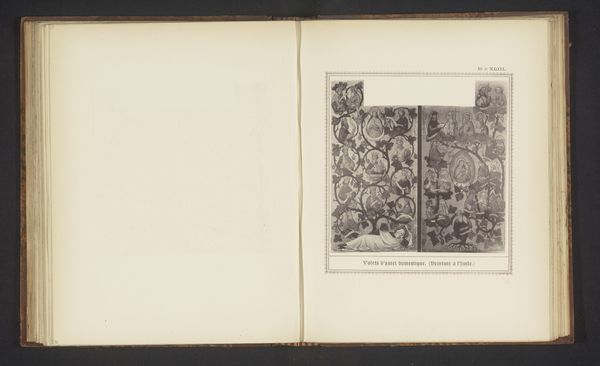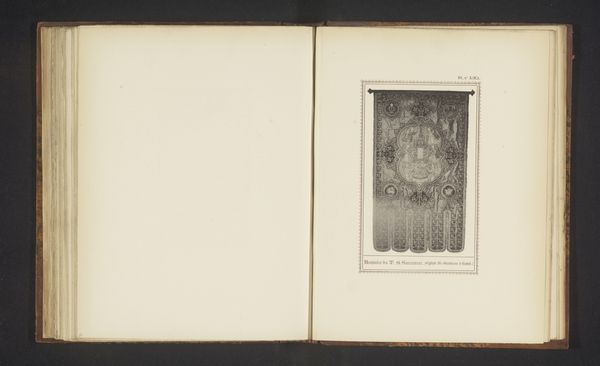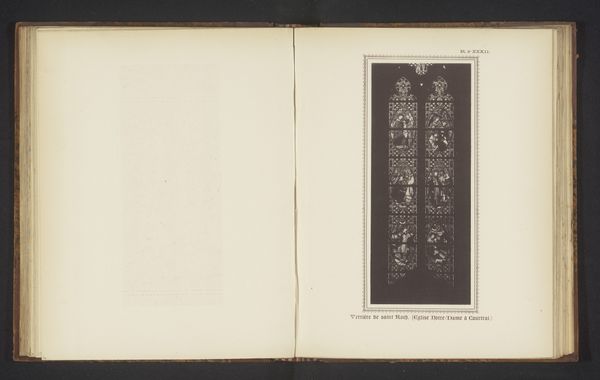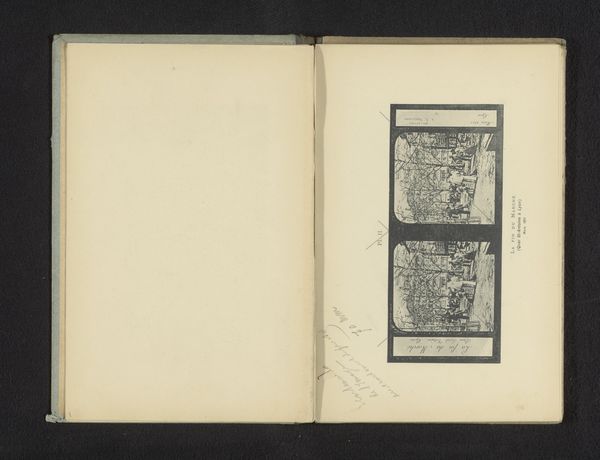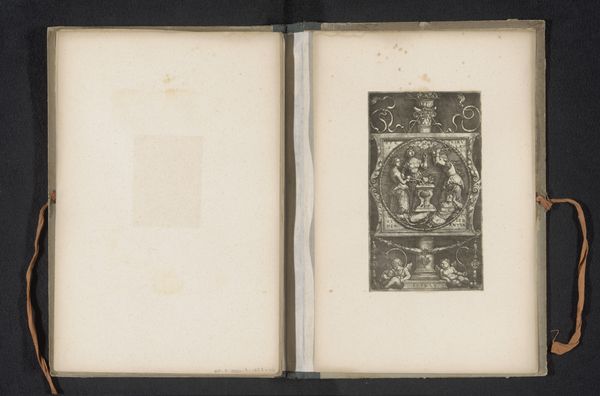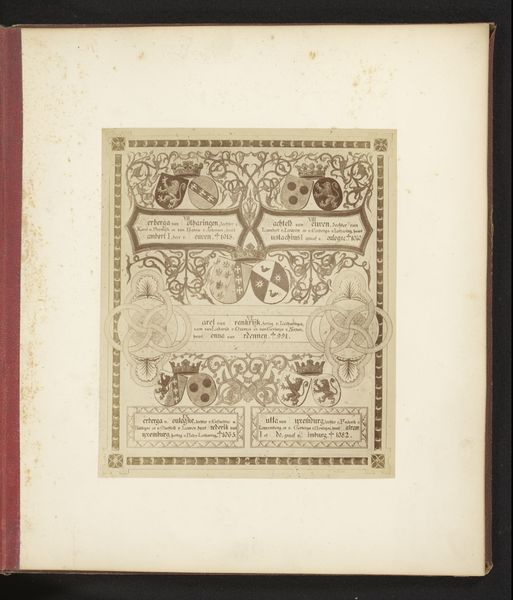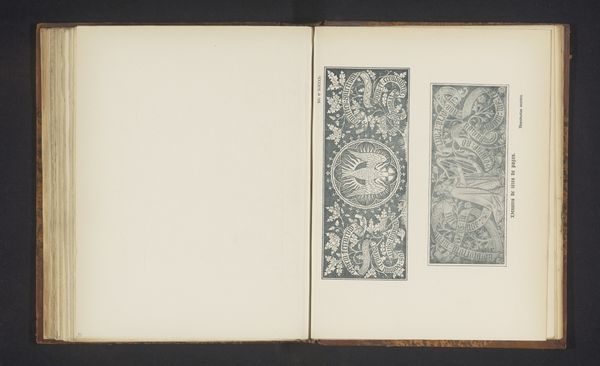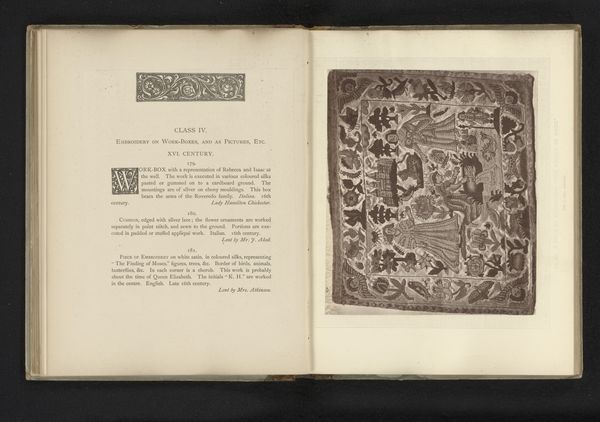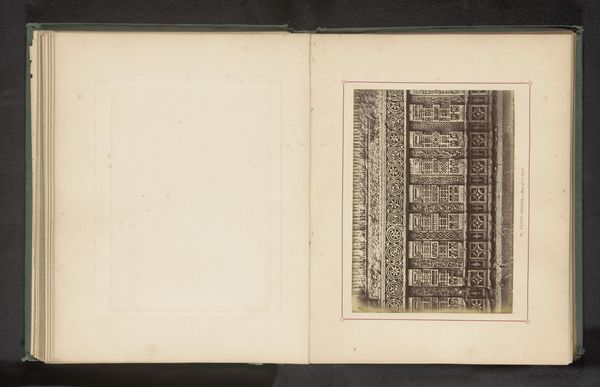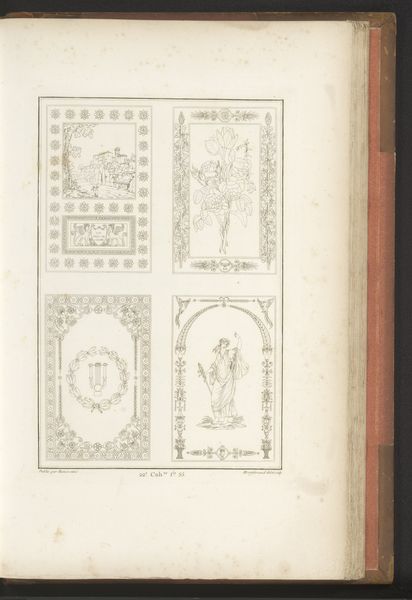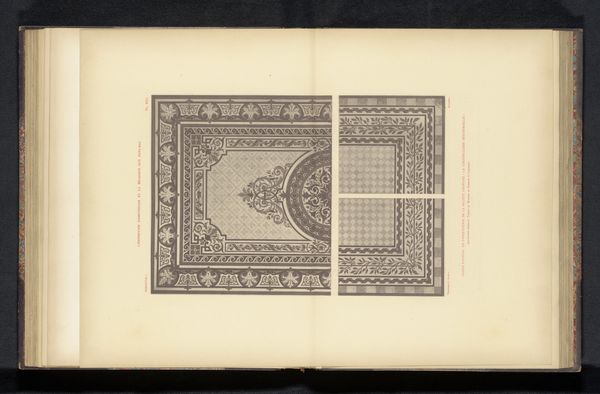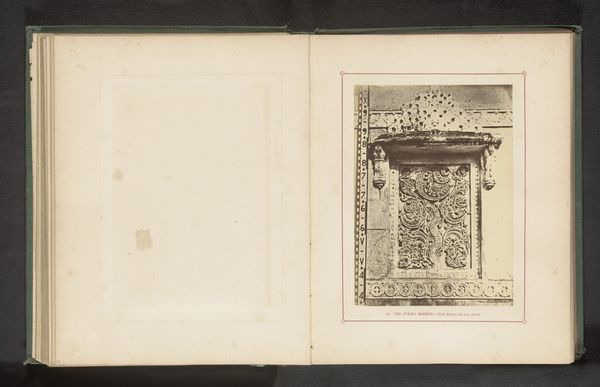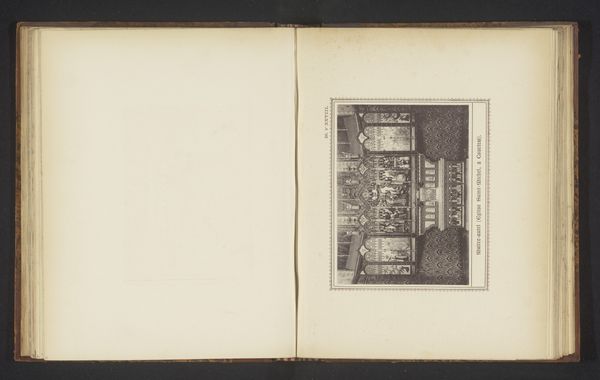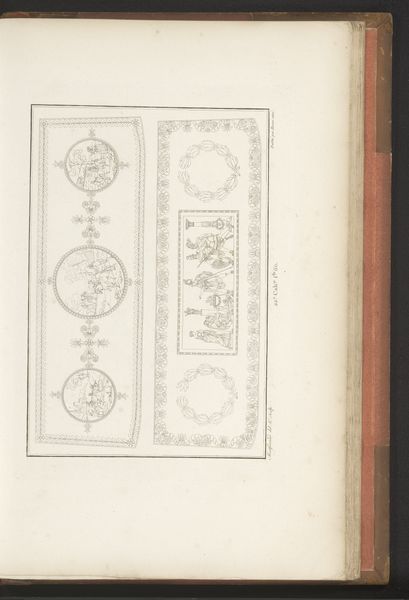
Deur van de tabernakel in de Sint-Salvatorskathedraal in Gent, België before 1896
0:00
0:00
print, engraving, architecture
#
aged paper
#
homemade paper
#
medieval
# print
#
hand drawn type
#
hand-drawn typeface
#
thick font
#
white font
#
handwritten font
#
thin font
#
engraving
#
architecture
#
historical font
#
small font
Dimensions: height 161 mm, width 81 mm
Copyright: Rijks Museum: Open Domain
This image shows the door of the tabernacle in the Sint-Salvatorskathedraal in Gent, Belgium, captured by Joseph Casier. It is an etching, a printmaking technique known for its fine lines and intricate detail. The etching process begins with a metal plate coated in wax. The artist scratches an image into the wax, exposing the metal beneath. When the plate is dipped in acid, the exposed lines are eaten away, creating grooves. Ink is then applied to the plate, filling these grooves, and the surface is wiped clean. Finally, paper is pressed against the plate, transferring the inked image. This method allowed Casier to reproduce the elaborate carvings and design of the tabernacle door with great precision. Etchings like this one were often made as a means of documentation, capturing the artistic and cultural heritage of a place. The labor-intensive nature of etching, combined with its capacity for detailed reproduction, highlights the value placed on both craftsmanship and the dissemination of cultural knowledge in the late 19th century.
Comments
No comments
Be the first to comment and join the conversation on the ultimate creative platform.
